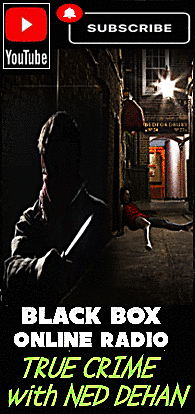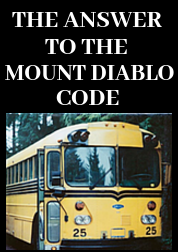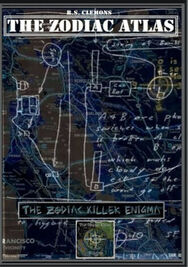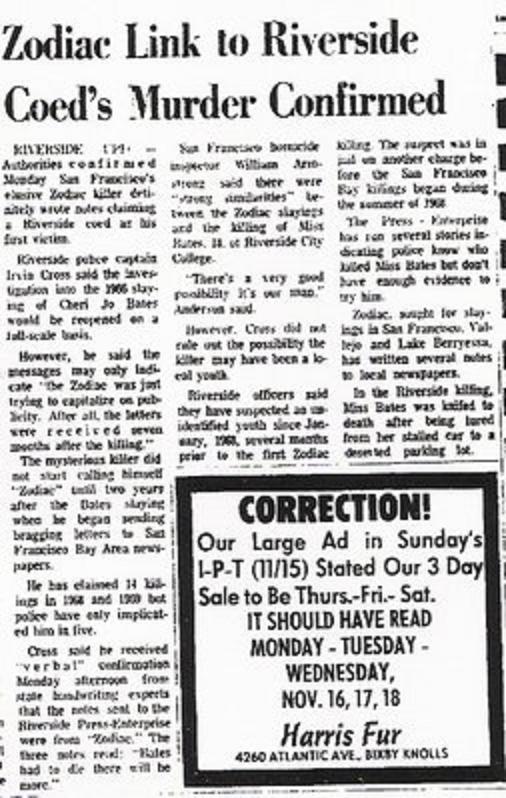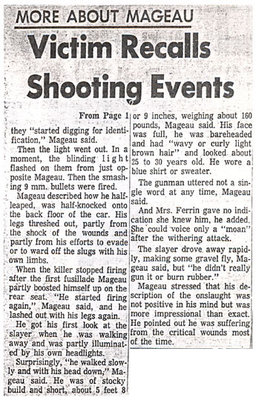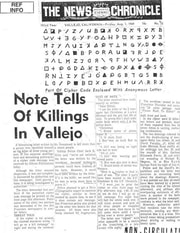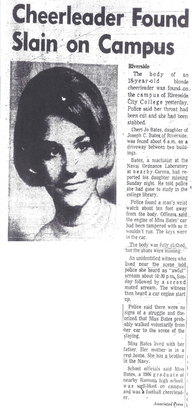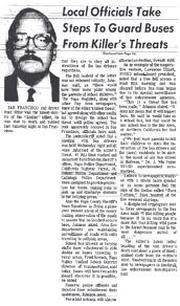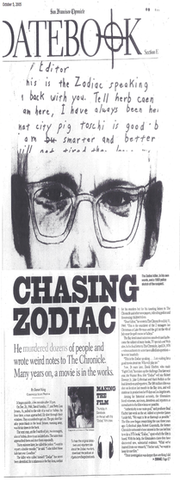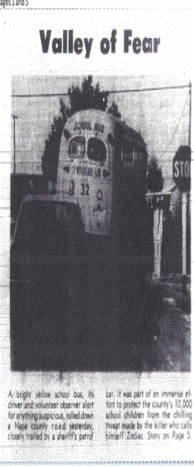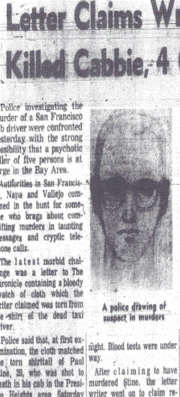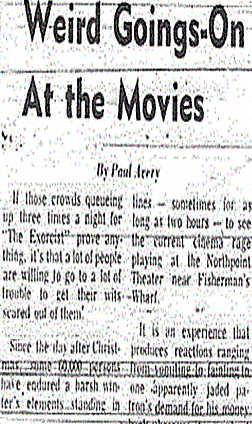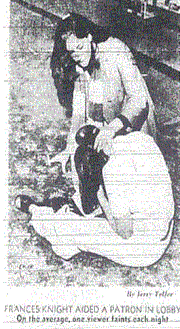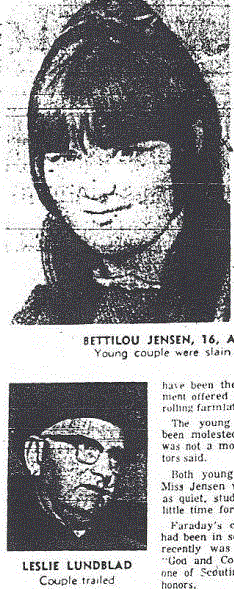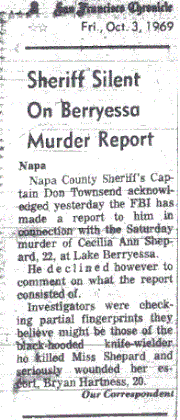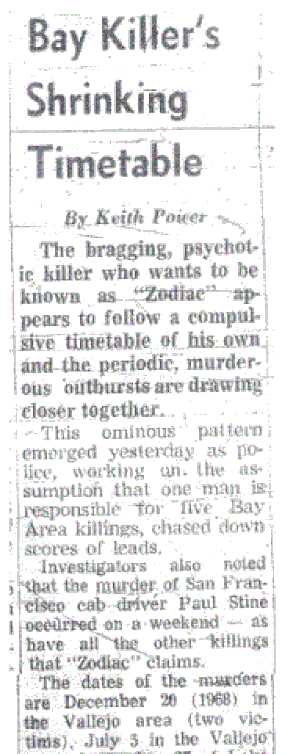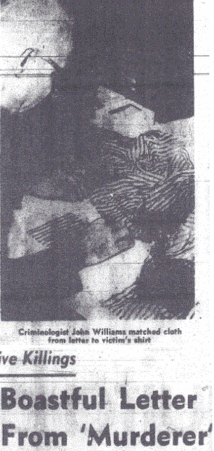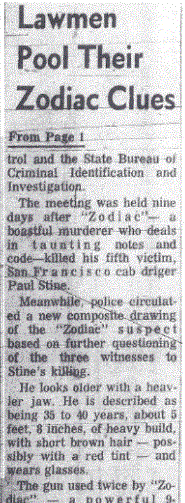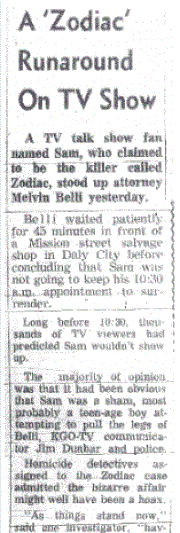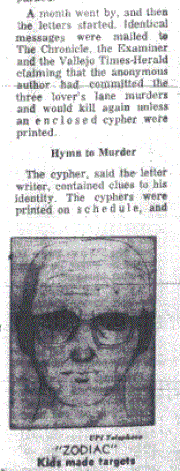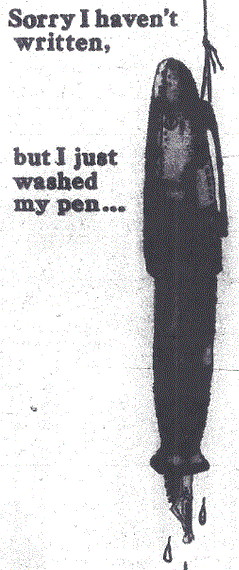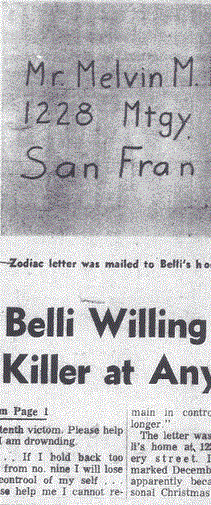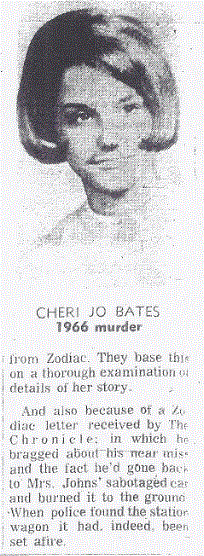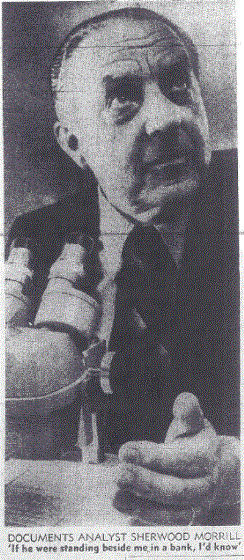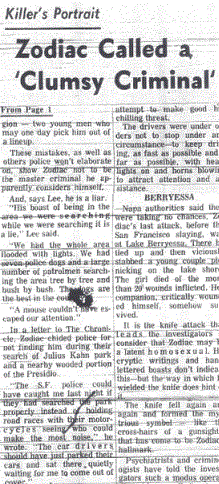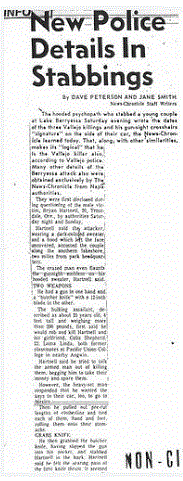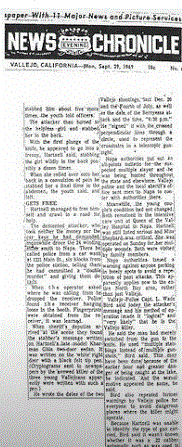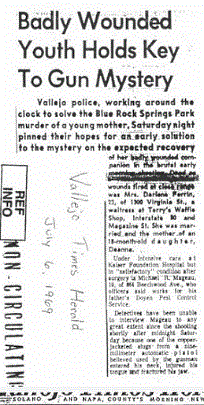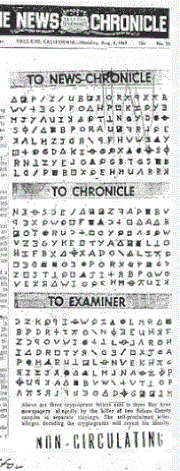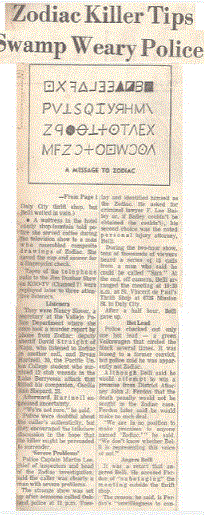"As both Robbins kids were the oldest, their statements were the given the most weight. Also they were the least traumatized by the event. One of the kids (not sure which) noticed a cab parked outside (in that now famous spot) with the interior lights on. So when Lindsey told me that the light inside the car was like a spotlight, it was so bright. The first kid at the window said the driver looked "sick, or something". Lindsey and Rebecca went to the window and saw the driver laying across the front seat, head toward the passenger door. His head was in the lap of another man (passenger). Rebecca saw blood and said out loud, "he's stabbing that man." She was seeing blood on the victim and saw the glint of a knife, so she assumed a stabbing was taking place. (No shots were heard by anyone). We know now that Zodiac was cutting off a large piece of Stine's shirt with the knife.
At this time, Lindsey went downstairs to get a better look at what was happening, while one of the kids upstairs called the police. Downstairs, the lights were off, so Lindsey knew he could not be seen from the outside. He got close to the window and watched his actions. He was shortly joined by Rebecca. They both watched and observed in silence as Zodiac pushed the driver to an upright position behind the steering wheel, exited the car and walked around the rear of the car and opened the driver's door. Stine had fallen over onto the seat and Zodiac pulled him back up into the seated position and had some difficulty keeping him upright. Once upright, he was seen to have a rag, or something like a handkerchief and began to wipe down the door area and leaning over the driver, part of the dashboard. When he was finished, Zodiac calmly walked to Cherry St. and walked north. Not many know this, but Lindsey (being 16. feeling immortal, and believing the suspect to be armed with only a knife) ran out of his door to see where Zodiac was going. He ran to the corner of Cherry and watched as Zodiac continued his casual pace right up to the corner of Jackson & Cherry."
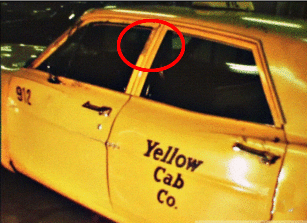
Lindsey went downstairs as the phone call was being placed. What they saw subsequent to this is: "they both watched and observed in silence as Zodiac pushed the driver to an upright position behind the steering wheel, exited the car and walked around the rear of the car and opened the driver's door. Stine had fallen over onto the seat and Zodiac pulled him back up into the seated position and had some difficulty keeping him upright. Once upright, he was seen to have a rag, or something like a handkerchief and began to wipe down the door area and leaning over the driver, part of the dashboard. When he was finished, Zodiac calmly walked to Cherry St. and walked north." The amount of time this took is subjective, but a minimum of 30 seconds is a fair estimate. Then the suspect walked casually north on Cherry Street.
Officer Armond Pelissetti arrived when the suspect was approaching the corner of Jackson and Cherry - approximately 50 seconds walking time. This indicates that Armond Pelissetti was very close when he received the radio dispatch, likely no longer than one-and-a-half minutes after the teenagers called the police. The first job of the police dispatcher, however, is to take the description and reported offence, before then relaying this information to responding units. This would suggest that Armond Pelissetti received the message and arrived in one minute or less. All the indications are, that the suspect began his journey up Cherry Street the moment that Armond Pelisstti received the initial dispatch. When he arrived, the suspect was approaching the intersection of Jackson and Cherry, approximately 50 seconds later.
The major problem, is that Officer Donald Fouke also responded to the initial radio broadcast at the identical time as Pelissetti. This means that Donald Fouke began his journey from the intersection of Washington and Presidio Avenue at the time the suspect began his journey from the crime scene, just like Armond Pelissetti did. The journey time for Donald Fouke traveling at a moderate speed of 30 mph, places him at the intersection of Jackson and Maple one minute later, where he spots the 'Zodiac'. For this to be the responsible observed by the three teenagers, the suspect would have to travel this 3 minute journey at walking pace in approximately one minute. Something he ultimately failed to achieve, because he was pointed out to Armond Pelissetti at the top of Cherry by Lindsey.
If we take the story of the three teenagers as reliable, which by all accounts it is, then the man observed removing the shirt piece of Paul Stine cannot be the man who pulled the trigger that night. This man would have exited the scene just prior to the teenagers looking out of the window. This would be the suspect observed by Officer Donald Fouke, and may explain the lack of blood on the clothes of the man walking on Jackson Street - because he was never present in the front of the taxicab. Donald Fouke described the sketch given by the three teenagers as 'similar' - only that he was 'older and heavier'. Is it likely these two assailants were related, father and son, or brothers? Or did Donald Fouke exhibit confirmation bias, meshing his story to fit that of the three teenagers? It would have been far more helpful had two independent sketches been sought. Had the sketches then matched, the validity of the eyewitnesses recollection would have been greatly enhanced.
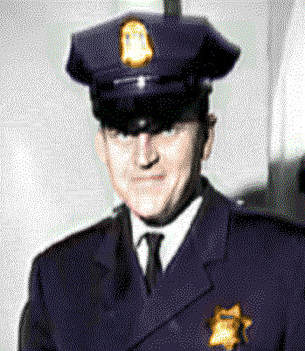
However, his description in the 2007 Zodiac documentary was taken after observing a man heading into a residence: "We turned west on Jackson Street, as we approached Maple Street I noticed on the north side of the street a white male adult. We slowed down as we passed him, I don't know, we we're still rolling, saw that it was a white male, step on the gas, 5, 10, 15 seconds tops from first spotting him to passing him. He sort of looked down, perhaps this lumbering gait, stumbling along, like a semi-limp might have come up in my mind, because he was putting his head down when he spotted the police car, and turned into the entrance way of a house, and by entrance way I mean stairs that are leading up that are concrete to a path, that leads to a front door. Never saw him get to the top of the stairs. You want the address of that residence, 3712 Jackson Street."
"Never saw him get to the top of the stairs" suggests this is when the subject went out of view. This does not tally with a man last seen heading north on Maple in the November 12th memorandum. He also stated this in the 2007 documentary: "we conducted a search on West Pacific Avenue, the opposite side of the wall and the last direction we observed the suspect going, we did not find the suspect." But in the above recollection the last place he saw the subject heading was up the stairs of 3712 Jackson Street. Bearing in mind these two wholly irreconcilable statements, what is the possibility both accounts have a shred of truth, muddled by time, and Officer Donald Fouke actually saw two men on Jackson Street that night. The first heading north on Maple, with the second feigning a move into 3712 Jackson Street.
The timeline would have the first assailant heading towards Maple as Officer Donald Fouke is approaching the intersection. The second assailant is turning the corner of Jackson and Cherry. Officer Donald Fouke slows down and beckons the man over, who states he saw somebody waving a gun heading towards Arguello Boulevard. The second assailant meanwhile is heading towards his accomplice, thinking he may have to intervene. But fortunately, Officer Donald Fouke, under the impression he is searching for a negro male adult buys the story and continues on Jackson Street, when he spots the second subject. The second assailant then instinctively feigns a turn into 3712 Jackson Street to give the impression to the patrol car he is a resident of that house. Officer Donald Fouke, satisfied by the first assailant's story slows down to observe this man, but ultimately decides to head off towards Arguello Boulevard. This may explain the conflicted versions given by Officer Donald Fouke that night - and his difficulty when it comes to a coherent account of the events that night.
The timeline is suggestive of two assailants, along with two subjects spotted in two different locations by Officer Donald Fouke. This may explain why the man observed in and around the taxicab that night by the three teenagers was apparently so calm. He possibly had no gun - or not the gun that fired the fatal shot into Paul Stine - and was simply aiding a stricken taxicab driver. This may have been his alibi had he required one.
The Zodiac stated "This is the Zodiac speaking. I am the murderer of the taxi driver over by Washington St + Maple St last night, to prove this here is a blood stained piece of his shirt." He didn't say we, so maybe we shall have to take his word on it.
This is not designed to promote the idea of two assailants at Presidio Heights, merely to point out the discrepancies in the timelines that simply make no sense.
TWO ASSAILANTS AT PRESIDIO HEIGHTS [PT1]
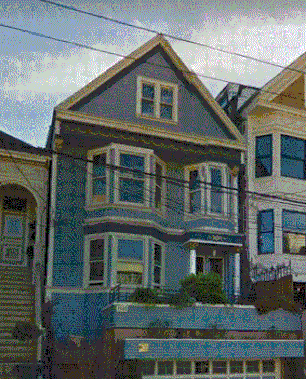
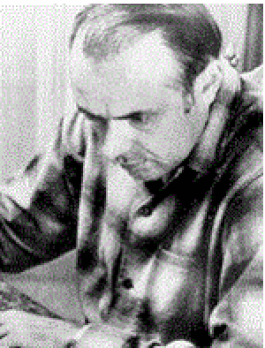
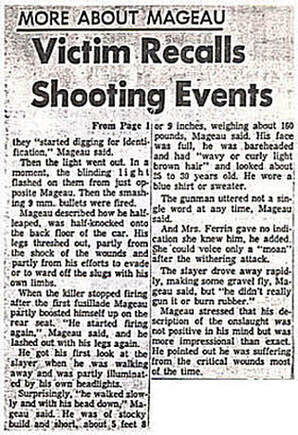
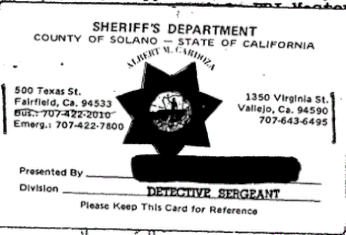
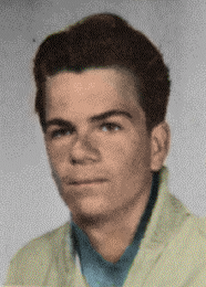

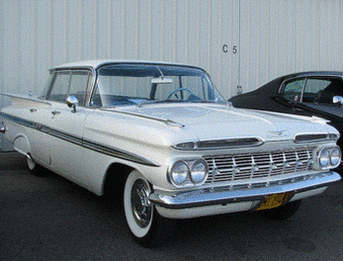
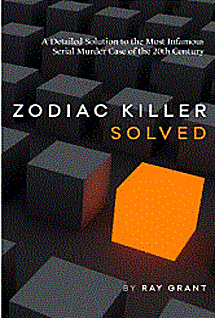
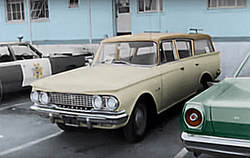

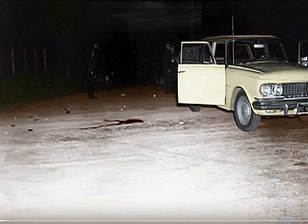
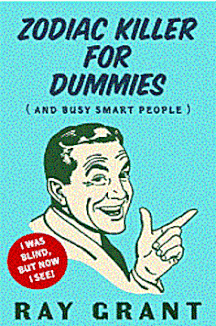
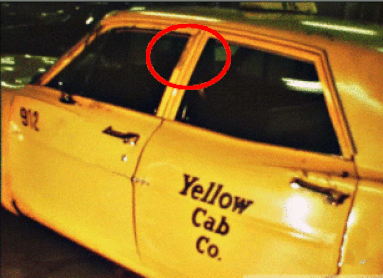
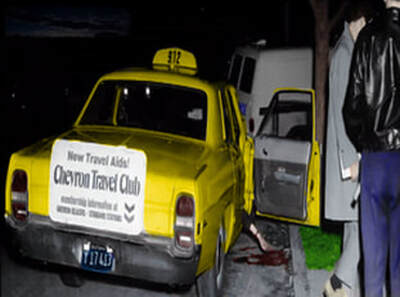
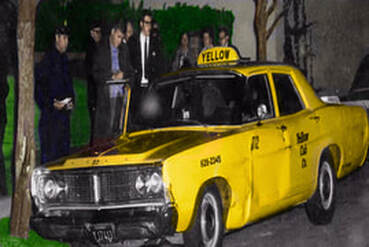
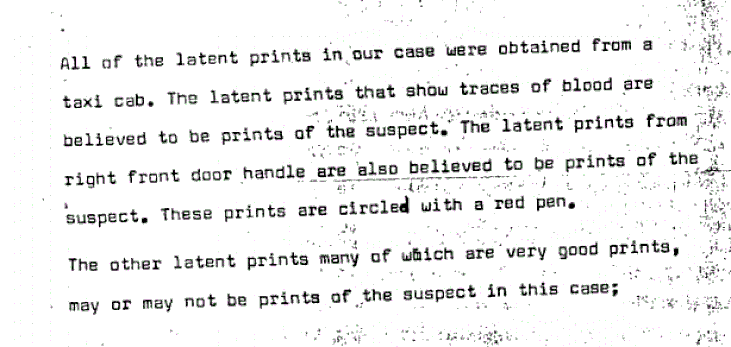
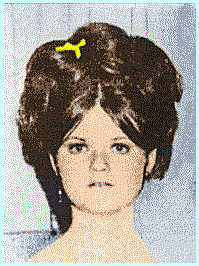

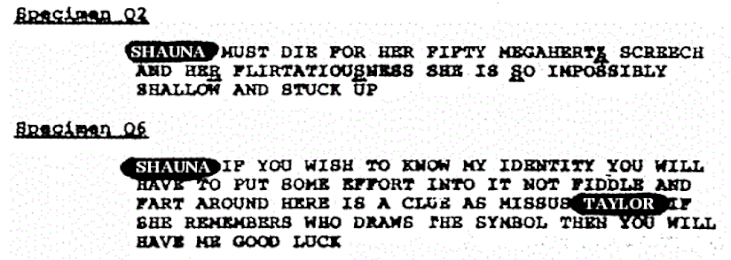
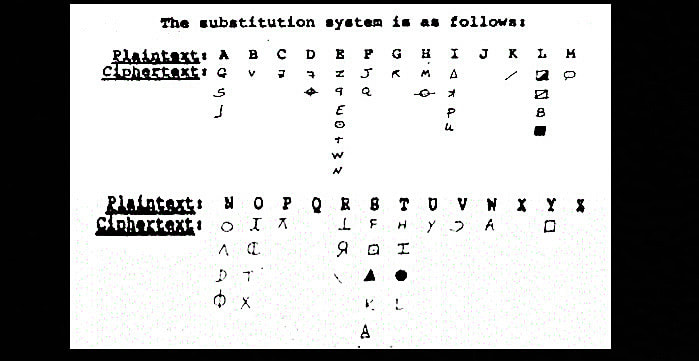
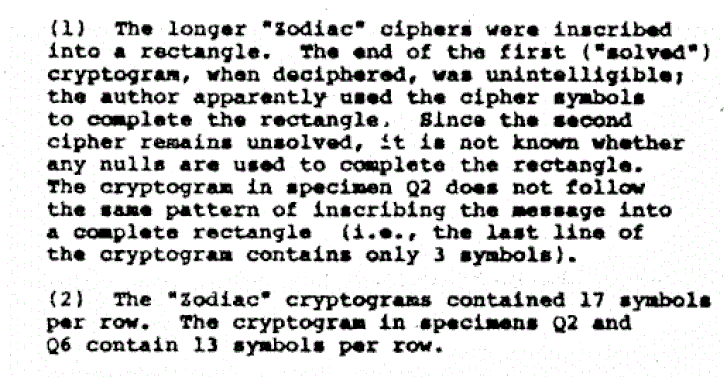
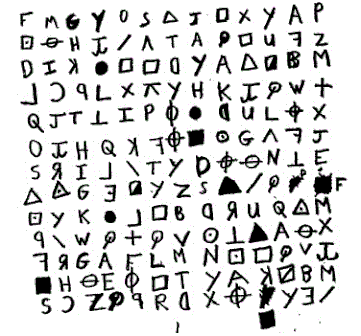
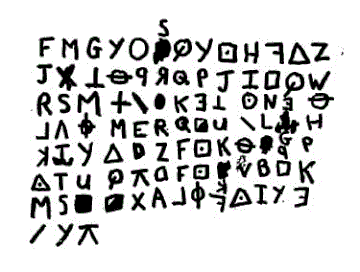
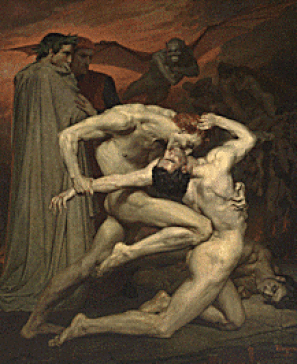

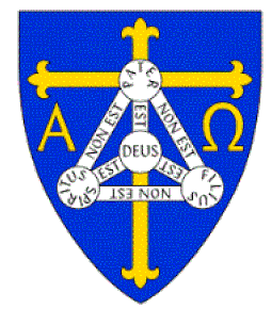
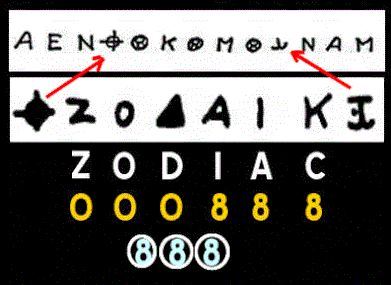
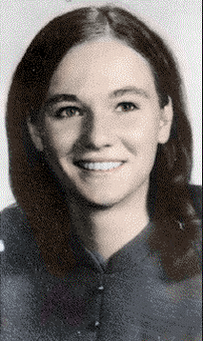
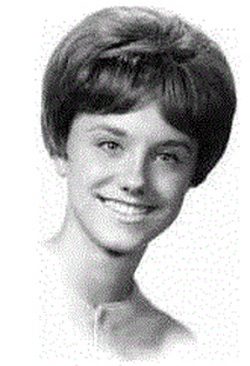
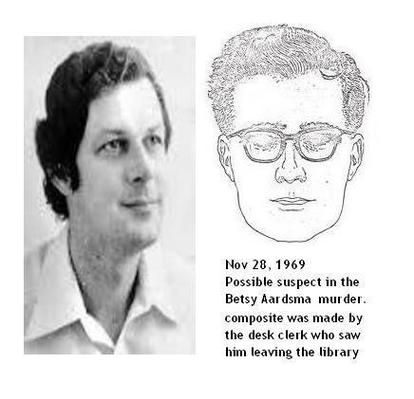
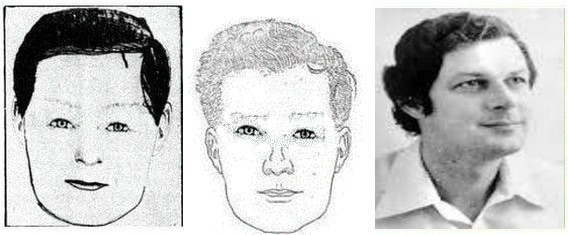




 RSS Feed
RSS Feed
